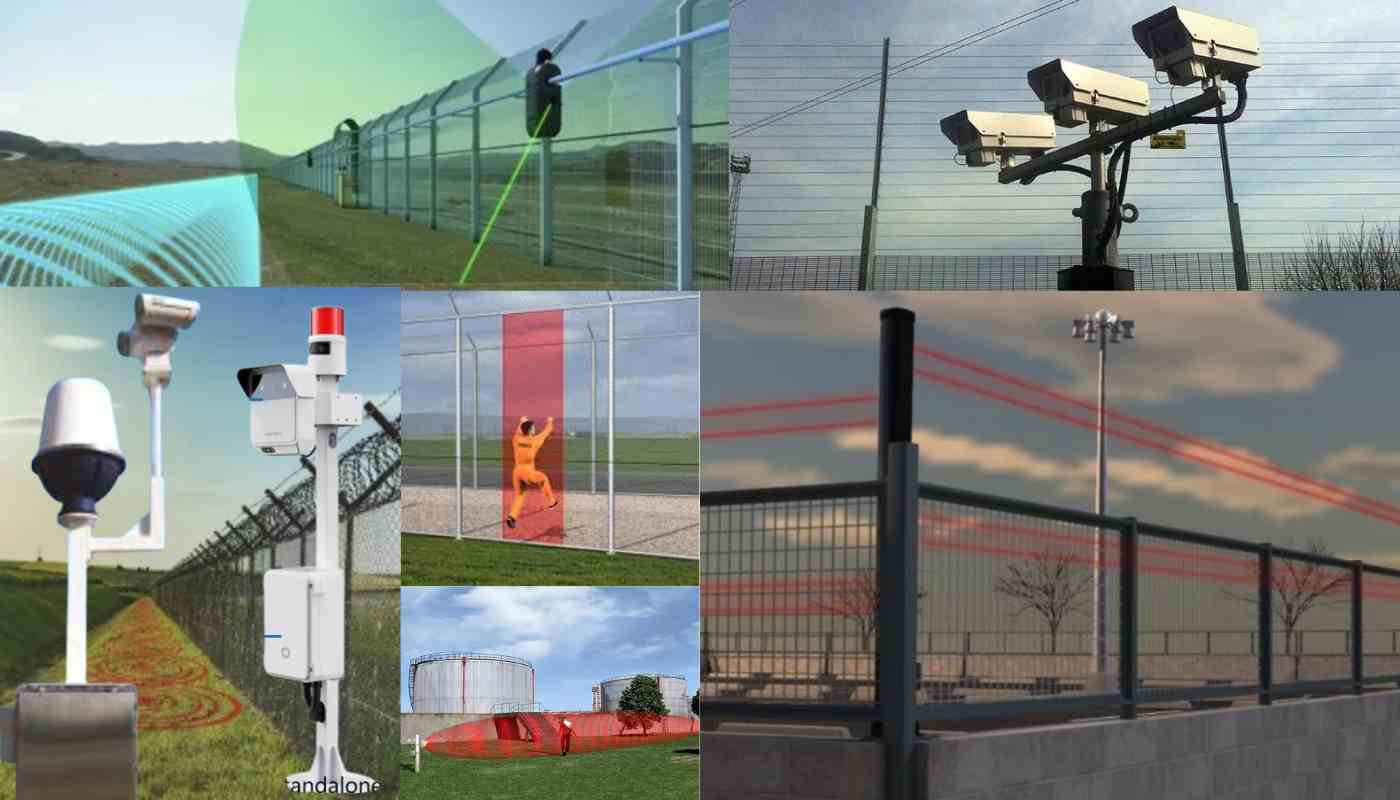Airport Security Perimeter Detection System in China in 2025
China’s aviation industry is experiencing a meteoric rise, with passenger numbers soaring and new airports popping up like futuristic skylines. This growth necessitates a robust security infrastructure, and the perimeter – the first line of defense – is under constant scrutiny. In 2024, China’s airport security perimeter detection systems are a fascinating blend of cutting-edge technology and unwavering vigilance.

Guardians of the Skylines
Imagine a multi-tiered security blanket safeguarding a sprawling airport. This is precisely the approach China takes. Here’s a closer look at the key components:
- Security Fencing: This might seem like a basic element, but high-security fences in Chinese airports are often fortified with security fence sensors. These can be pressure sensors that detect attempts to climb or breach the fence, or fiber optic sensors that can pinpoint even the subtlest vibrations caused by cutting attempts.
- CCTV Surveillance: Ever-watchful eyes are a must. China utilizes a dense network of high-definition airport security cameras that blanket the perimeter. These cameras are often equipped with intelligent video analytics (IVA), which uses AI to detect suspicious activity like loitering, unauthorized access attempts, or abandoned objects.
- Millimeter Wave Radar (MMW) and LiDAR: These advanced sensors pierce through darkness and bad weather conditions. Millimeter wave radar (MMW) emits electromagnetic waves that can detect human presence behind obstacles, while LiDAR (Light Detection and Ranging) uses lasers to create highly detailed 3D maps of the perimeter, allowing for real-time monitoring of any intrusions.
- Drone Detection Systems: The rise of drone threats has prompted the deployment of sophisticated drone detection systems in Chinese airports. These systems can use various technologies, including radar, radiofrequency (RF) detection, and acoustic analysis, to identify and track unauthorized drones, ensuring a safe airspace for incoming and outgoing flights.
- Facial Recognition: China is a leader in facial recognition technology, and this extends to airport security. Facial recognition cameras can be integrated with security databases to identify unauthorized individuals or those on watchlists attempting to enter restricted areas.
- Perimeter Security AI: The true magic lies in how these technologies work together. Perimeter security AI acts as the central nervous system, integrating data from all the sensors and cameras to create a holistic view of the perimeter. This allows for real-time threat assessment, faster response times, and a more efficient deployment of security personnel.
Human Expertise and Integration
While technology is at the forefront, human expertise remains crucial. Security personnel are trained to interpret data feeds, identify suspicious behavior, and react swiftly to potential threats. Additionally, security integration is paramount. All the aforementioned systems – fences, cameras, sensors, AI – need to seamlessly communicate with each other to ensure a unified security response.
The Ever-Evolving Threat Landscape
China’s airport security strategists understand that threats are constantly evolving. Here are some key considerations:
- False Alarm Reduction: A constant challenge for any security system is managing false alarms. Advanced systems in Chinese airports are being fine-tuned to differentiate between genuine threats and environmental disturbances like strong winds or small animals, minimizing unnecessary disruptions.
- Cybersecurity: With an increasing reliance on technology, cybersecurity becomes a critical concern. Chinese airport authorities are implementing robust cybersecurity measures to safeguard their systems from potential cyberattacks that could compromise security protocols.
- Risk Management: A proactive approach is key. Security risk management involves continuously assessing vulnerabilities and implementing mitigation strategies. This ensures that China’s airport security perimeter detection systems remain adaptable and effective.
Innovation and Collaboration
China’s airport security industry boasts several advantages:
- Thriving Security Industry: China has a flourishing domestic security industry with numerous companies developing cutting-edge airport security technology. This fosters innovation and ensures a constant flow of new solutions.
- Government Investment: The Chinese government prioritizes aviation security and invests heavily in research and development. This financial backing fuels advancements in perimeter detection systems.
- Collaboration: There’s a strong emphasis on collaboration between government agencies, security companies, and research institutions. This fosters knowledge sharing and accelerates the development of effective security solutions.
The Smart Airport of Tomorrow
The future of airport security in China lies in the concept of smart airports. These airports will leverage the Internet of Things (IoT), Big Data analytics, and artificial intelligence (AI) to create a seamlessly integrated security ecosystem. Imagine a system that automatically detects and tracks suspicious activity, triggers appropriate responses, and optimizes resource allocation – all in real-time.
FAQs
What are the main technologies used in China's airport perimeter security?
In 2024, Chinese airports utilize a layered approach that includes security fences with sensors, high-definition CCTV with intelligent video analytics, millimeter wave radar for bad weather visibility, and LiDAR for 3D mapping.
How does China address false alarms in its perimeter detection systems?
Advanced systems are being implemented to differentiate between real threats and environmental disturbances like wind or animals. This reduces unnecessary disruptions and keeps security personnel focused on genuine threats.
What are the advantages of China's approach to airport perimeter security?
China benefits from a thriving domestic security industry with constant innovation, strong government investment in R&D, and collaboration between all stakeholders, leading to faster development of effective security solutions.








